
by Fronetics | Jul 27, 2017 | Blog, Content Marketing, Current Events, Marketing, Social Media
In July’s social media news, platforms saw a rise in daily active users and broke records in more than one category.
Once thought to be a passing trend, social media is nowhere near slowing down in terms of growth. Next Web reported that India has taken over as the largest audience of Facebook, beating out the U.S. with over 241 million active users. Active users in India are up 27% in the past six months, twice the rate of U.S. users.
But the social media news doesn’t stop there. Facebook and Instagram are topping charts with their active users. LinkedIn and Google are boosting job opportunities through new features and search capabilities. And social media monitoring platforms are adding video to their repertoire.
Here’s a look at this month’s social media news.
Facebook reaches over 2 billion monthly active users around the world
India isn’t the only country boosting Facebook user numbers. The social media giant just celebrated having “2 billion people connecting and building communities on Facebook every month.” The company thanked its users with a personalized video and Mark Zuckerberg’s promise to take the global connection and use it to create a “more open and connected” world.
Instagram Stories reaches 250 million daily active users and adds live video replay
Instagram Stories continues to take over the ‘stories’ arena with 250 million active daily users. Snapchat, which founded the stories format, is falling far behind with only 161 million active daily users. Instagram Stories was unveiled last August and has experienced remarkable growth and success thanks to support from its sister company, Facebook. The social media platform has also introduced its newest feature, a share button with the ability to replay live videos for up to 24 hours.
Facebook tests custom audiences based on engagement with Instagram Business Profiles
Adweek reports that “Facebook is testing the ability for brands to create custom audiences based on engagement with Instagram business profiles.” This new type of filtering could allow brands to create engagement audiences, people who have previously engaged with your content on Instagram. Filters could include all interactions, users that have commented on a post, or any activity within a certain time frame. Though only in the testing stages, these custom audiences could help brands create specific messaging for targeted audiences based on their interactions with a brand’s Instagram page.
CrowdTangle adds video views to metrics
CrowdTangle, a social media monitoring platform for brands, has just added video views to its metrics for Facebook and Instagram. With video’s increasing popularity, the company felt it was important to offer its clients a way to measure how their videos are performing. “Publishers can now easily track emerging new trends and best practices on Facebook and Instagram, as well as discover great videos and video creators, see overall video views across their industry, and benchmark themselves against competitors,” CrowdTangle says.
LinkedIn creates new search to boost job opportunities
LinkedIn has created new search capabilities that make it easier for users to uncover new jobs and other professional opportunities. The new search also allows users to see the companies and job titles of the people who found them in a search, identifying opportunities that align with the user’s resume. Available on your phone or desktop computer, these new features make searching jobs and hiring managers that much more accessible.
Google launches Google for Jobs
Partnering with the biggest job searching sites — like LinkedIn, Monster and CareerBuilder — Google just introduced a new initiative to allow users to find job opportunities directly through a Google search. The new search update also allows users to receive email alerts of new employment postings in real time. “When Google for Jobs launches, it will act as kind of a mega job-search engine that will let you sort through multiple career sites in one go,” says Google CEO Sundar Pichai.
Related Posts

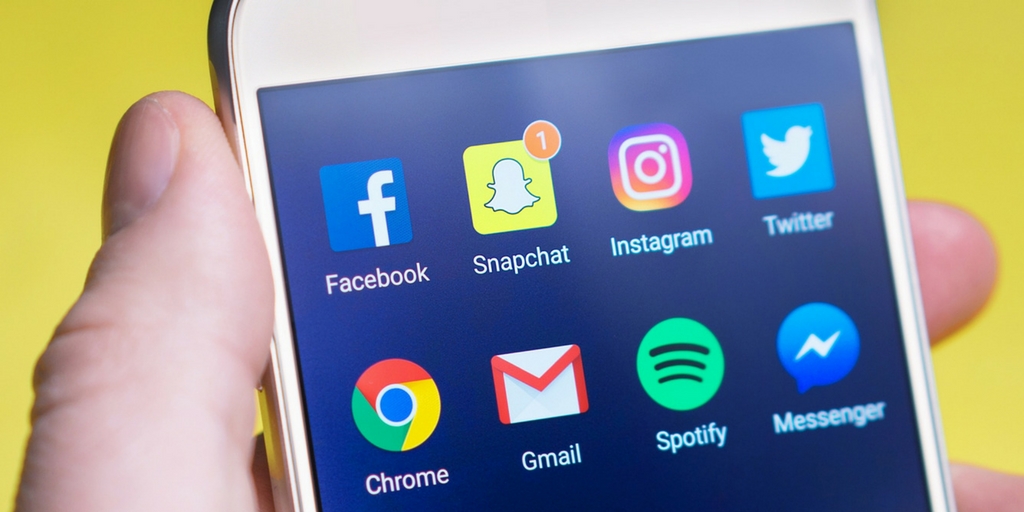
by Fronetics | Jul 20, 2017 | Blog, Content Marketing, Marketing, Social Media
Recent surveys show video platforms are the next big focus for marketers in terms of content distribution channels.
Social media marketing can seem a bit like keeping up with the Joneses. Which content distribution channels are your competitors using? Where are they getting the most engagement? How often are they posting and when?
We’re big advocates of social benchmarking against your competitors. But, just as much, we are always thinking ahead, trying to figure out where the industry is going next. It’s important to get ahead of the trends so that you can be right there leading the pack.
The State of Inbound has been tracking global marketing and sales trends for the last eight years, with a particular focus on inbound marketing. (Content marketing is a form of inbound marketing.) The 2017 survey included more than 6,300 professionals at from 141 countries, so it offers a very comprehensive view of current trends in content marketing.
One part of the survey of particular interest involves which distribution channels marketers are planning to invest in next. It gives us an idea of where companies will be putting their time and money in terms of social media marketing. Let’s take a look at the results.
Content distribution channel investment
The more than 6,300 marketing professionals surveyed answered the following question: “What content distribution channels do you plan to add to your marketing efforts in the next 12 months?” The chart below shows responses from 2016 and 2017 surveys for comparison.
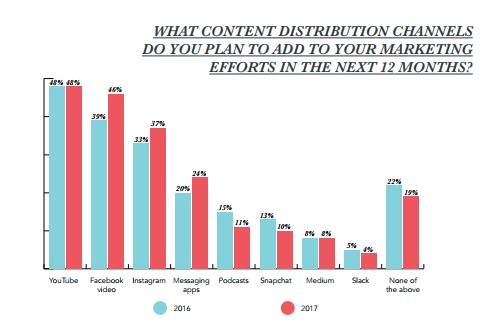
Source: State of Inbound 2017
Marketers will maintain or increase their investment on YouTube and Facebook video — focus on the latter jumping a significant 7% over 2016. Interest in Instagram and messaging apps has also grown significantly over the last year, while marketers’ investment in podcasts, Snapchat, and Slack has decreased.
I also want to note quickly that investment in Medium has remained steady at 8%. I plan to write more about Medium as an opportunity for supply chain and logistics businesses in the near future, so stay tuned!
Misaligned priorities
Another noteworthy aspect of this survey question is how respondents at various levels of the corporate ladder answered. Do the people who set company goals have the same priorities as those tasked with social media management and content distribution on a daily basis? Of course not! Take a look.
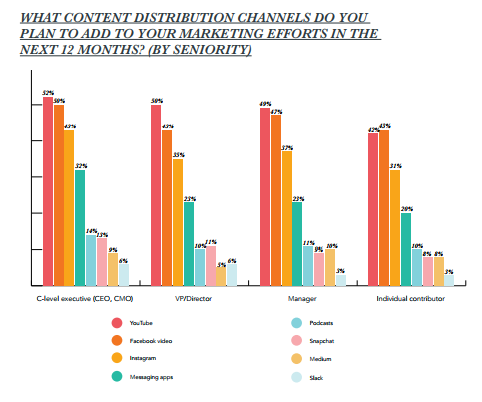
Source: State of Inbound 2017
Broken down by respondents’ roles, the data shows a division in the priorities of C-level executives versus individual contributors. Executives show a higher preference to expand to new channels of distribution such as messaging apps. The individual contributors responsible for the day-to-day oversight, however, offer a more conservative approach, favoring more tried-and-true distribution channels.
It is also interesting to note that individual contributors consider Facebook video a top priority slightly over YouTube, while executives, directors, and managers uniformly prefer YouTube.
Our takeaway: Video, video video
Across the board, companies are turning their content distribution focus to video platforms, and the supply chain should be, too. If you haven’t heard me say it before, I’ll tell you now: Yes, video can work for the supply chain.
Why? In a nutshell, YouTube reaches more adults ages 18-34 in the U.S. than any cable network. Users browse the platform for entertainment purposes, but also for tips, information, and ideas. And anywhere people are seeking solutions, businesses should be providing answers.
Live video, too, is a trend that is not going away anytime soon. According to the 2017 Social Media Marketing Industry Report, 61% of marketers plan on using live video services such as Facebook Live and Periscope, and 69% want to learn more about live video.
Live video helps businesses promote transparency, good communication, and relatability. It’s something that will do your business a world of good in the supply chain and logistics industries.
Related posts:

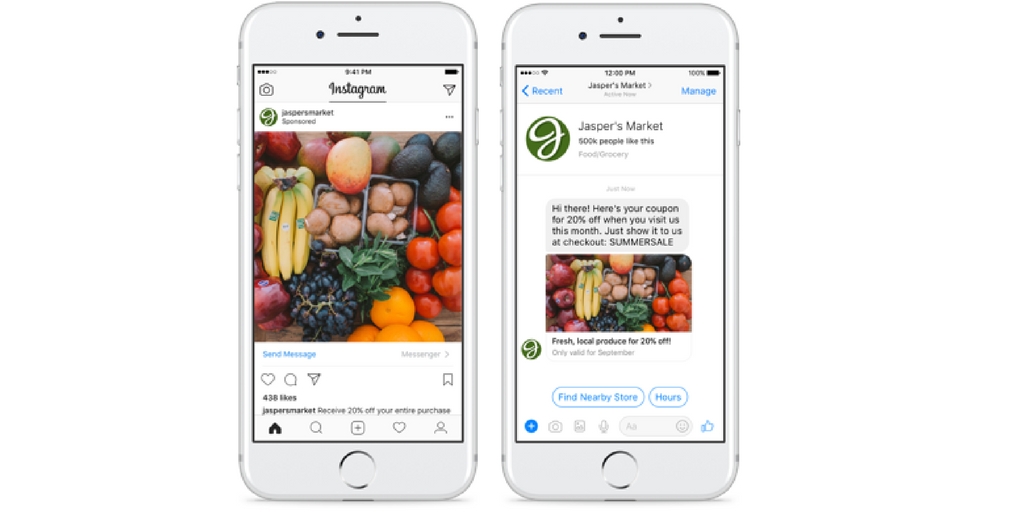
by Fronetics | Jun 28, 2017 | Blog, Current Events, Marketing, Social Media
In June’s social media news, more social media platforms are making changes to benefit businesses who advertise.
June has seen a lot of recent changes in big-name platforms, like Facebook, Instagram and Twitter, that will directly impact the engagement between businesses and potential customers. The trend is to create apps that work harder for paid advertisers, increasing brand awareness for businesses and proving their worth through built-in tracking.
Apple has also been working overtime to keep their products competing with the big players in the social media game. New analytics and introduction of Business Chat are keeping the fruit relevant.
Facebook Rolls Out Two New Ad Campaign Tools for Marketers
Facebook delivered two new options for helping businesses grow: Valued Optimization and Lookalike Audiences. The first, Valued Optimization, “works by using the purchase values sent from the Facebook pixel to estimate how much a person may spend with your business over a seven-day period. The ad’s bid is then automatically adjusted based on this estimation, allowing campaigns to deliver ads to people likely to spend more with your business at a low cost.” The second, Lookalike Audiences, helps marketers reach people likely to be interested in a business based on people who have visited their site. Read more
Facebook Expands Click to Messenger Ads to Instagram
Facebook continues to expand ways for users to connect directly with businesses. The Click to Messenger ads have been available through Facebook for a while, and now they’re expanding to Instagram. “Instagram Click to Messenger ads let you reach the people you care about on Instagram and engage with them on Messenger.” Read more
Instagram Makes Sponsored Content More Transparent
Last week Instagram introduced a new “paid partnership tag” that will clearly identify sponsored posts on its app. “Partnerships between community creators and businesses are an important part of the Instagram experience, and a healthy community should be open and consistent about paid partnerships.” This new tag will help users determine when posts are influenced by commercial relationships with businesses. Read more
Apple Rolls Out Analytics to Podcast App
During a podcast session at WWDC, the Apple developer conference, Apple announced that its podcast app will now have the ability to give publishers data that tells them just how much of their episodes are actually being listening to. Apple Podcasts app will allow creators to track aggregated data about when users start, stop, and skip within an episode. This data will give podcasts tangible results that were once estimated from the number of downloads a podcast received. Read more
Apple Debuts Business Chat
Business Chat allows real customer service representatives to communicate directly with users through iMessage. According to the Apple Developer site, customers can use this new feature to “find your business and start conversations from Safari, Maps, Spotlight, and Siri.” The Verge reports that “there will be built-in features like Apple Pay and calendar integration, which will allow Business Chat to facilitate purchases without requiring the user to exit the chat.” Read more
Twitter Experiments with New Promotional Features for Sponsored Live Video
After entering into an exclusive partnership with Live Nation, Twitter is experimenting with new features to help promote events featured on LN. New features like an alert that users can set to remind them of the live event or a branded timeline that will put all tweets about the event on one landing page will help strengthen the relationship between Twitter and Live Nation, paving the way for more partnerships with big brands. Read more
Related posts:
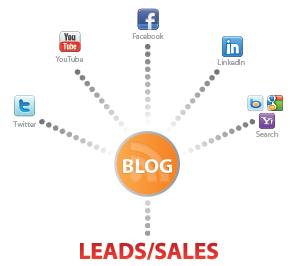
by Jennifer Hart Yim | May 6, 2014 | Blog, Content Marketing, Marketing, Social Media, Strategy
This is the second in a series of blog posts written by Adam Robinson, Director of Marketing at Cerasis. Founded in 1997, Cerasis is a top freight logistics company and truckload freight broker.
#1: What are your Marketing Objectives?
The following were the marketing objectives we decided for the Cerasis marketing strategy:
- Create a consistent marketing program of brand awareness campaigns and multi-channel marketing platforms in order to gain leads and sales from a more sophisticated and larger shipper.
- Achieve market perception as a thought leader in the logistics industry through consistent content marketing.
As part of our strategic plan, the Cerasis website and blog is the hub of the entire process. Every marketing element’s purpose is to (a) build brand awareness, (b) build community, and (c) drive traffic from those elements to the blog and website. This is important for several reasons:
- We are in total control of our website content, messaging, and engagement.
- Our blog and website is the best place for inbound lead generation.
- Blog content lasts longer than posts within the realm of social media and other traditional channels such as advertising in a magazine.
- A blog is the best place for sharing your story and showing expertise.

#2: Understanding Content Marketing and the Approach
Consumers of any product or service work through a process that starts with becoming aware of a need and ends with making a decision to purchase or not to purchase (Universal Marketing Funnel). Because of our marketing efforts, at any given moment in time Cerasis will have potential customers considering our company within various stages of the decision process. Our content marketing strategy will focus on building content that communicates with these prospective customers no matter where they are in their decision journey with Cerasis.
- Awareness – This is the stage in which a potential customer becomes aware that your company exists. Of the content you create, 30 percent to 40 percent will be for the purposes of awareness — making potential customers aware of your company and exposing you to your target market. Awareness content focuses on trends, education of best practices, and is completely devoid of over salesy messaging.
- Evaluation – This is the stage in which potential customers are in the market for what you are selling and they are trying to formulate their buying criteria. Like the awareness stage, 30 percent to 40 percent of our content will be focused on helping the customer evaluate your offering. Try and create content which evaluates your type of business vs. another. Another good example is iPhone vs. Android.
- Decision – Decision-based content that communicates why a customer should buy from Cerasis will represent about 20 percent of our content strategy. This kind of content is not overtly salesy, but is in line with your strengths and unique selling proposition
- Fanatic – This is content that is mostly user generated from your customer base and brand loyalists. These are in the form of testimonial, case studies, and guest blogs. This kind of content is about you, but from someone else’s perspective.
#3: Target Audience Establishment and Research
Of course if you want to even have results in social media and content marketing, you have to understand who you are trying to reach. It’s important to think holistically when considering who you are trying to reach at a potential prospects’ company. Typically, your target audience falls into two categories: Primary (decision makers) and Secondary (influencers of the decision maker), but there could also be Tertiary (these are the vetters; admins, executive assistants, and those gathering info to present to the group, usually in a B2B environment).
When thinking about your target audience, think of the following:
- Broad Categories: Think of the different verticals you can support. For example, a logistics company may want to reach those in the industries of Manufacturing, Supply Chain, Logistics, Transportation, Distribution and Freight. Let the categories be your guide for when you are joining digital communities or writing content you will then distribute in these communities.
- Job Titles: Next, ask the sales staff who they typically must talk to in order to get a signed contract. Typically, the person who signs the check, or the contract, is in leadership and makes the ultimate decision. This may be a CFO of a manufacturing company, or a Manager of some sort. Then, ask the customer service reps who fulfill your service or product offering who they deal with at your customers’ companies. For example, it may be Account Manager. Then, finally, continue to ask if there are other job titles that make sense. You can use these job titles to find communities easily on LinkedIn.
- Search Engine Key Phrases: To complete your list of your target audience, next go to Google.com and search some of these job titles to find related job titles, which you can find at the bottom of the search page. You may also use Google’s free Keyword Tool, plugin the job titles, and see related key phrases to those job titles.
More Action Items with this information:
- Start researching what kind of content is relevant to these job titles and industries in preparation for your content planning session
- Identify popular news sources, people, and blogs from which you may draw inspiration, establish key relationship for future guest blogging or networking, and of course in curation of content of value to your target audience to spur community growth and engagement in platforms such as LinkedIn, Facebook, Google+, or Twitter.
#4: Understanding Digital Assets, Social Media Platforms, and Online Communities Activation
Digital Assets
Digital assets are online environments you create from scratch. Digital assets are often created using a technology framework, a hierarchy of navigation, your company logo and custom graphics, and professional copy writing. The major digital assets you should consider when getting ready to activate your content marketing strategy are Website, Company Blog, Landing Pages, Videos, Podcasts.
Social Media Platforms
In general, most social media platforms you set up require you to amass a following in order to be effective. There are some platforms where the entire reason you establish it in the first place is to build followers, and then add value in the way of posts or messages or use to distribute your original content in order to lead back your desired target audience to your digital assets in order to gain awareness and inbound leads. The following are the major social media platforms, what they are, and what they may be used for:
- LinkedIn Company Page: A LinkedIn company page allows you to post information about your company such as founding date, about section, post location information, hours, products and services, job postings, and allow employees to list the company page within their own individual profiles. The page is used for marketing by accruing followers and post messages, such as your own original content, which reach those followers. LinkedIn offers great analytics around how many people were reached with your posts, how many clicks you receive, and how many followers you have gained over time. Company pages are a great way to find out company intelligence such as key decision makers.
o USES: Typically, a LinkedIn page is most effective in a business-to-business environment, as the mindset of the users on LinkedIn are for either finding jobs, finding information on their industry of choice, or consuming content distributed or curated by companies. Aid in the vetting process of potential clients who look up your company via search engines or LinkedIn search, aids in establishing credibility with target audience, reach your followers through consistent, relevant, and remarkable content, promote products and services, stay in touch with employees
- LinkedIn Profile: LinkedIn gives you the keys to controlling your online identity. Have you Googled yourself lately? You never know what may come up. LinkedIn profiles rise to the top of search results, letting you control the first impression people get when searching for you online.
o USES: Again, a profile, when used for digital marketing, is friendlier in a B2B environment, over a business-to-consumer (B2C) geared marketing campaign. The LinkedIn profile allows you to build awareness of yourself and company through consistent posting, serve as a repository for your own personal brand, join LinkedIn groups through your profile, search engine optimize your profile for increased visibility, gain valuable market insight through LinkedIn Today, build connections with your desired target audience
- Twitter: Twitter is an information network that brings people closer to what’s important to them. Every day, millions of people turn to Twitter to connect to their interests, to share information, and find out what’s happening in the world right now. Anyone can read, write and share messages of up to 140 characters on Twitter. These messages, or Tweets, are available to anyone interested in reading them, whether logged in or not. Your followers receive every one of your messages in their timeline – a feed of all the accounts they have subscribed to or followed on Twitter. This unique combination of open, public, and unfiltered Tweets delivered in a simple, standardized 140-character unit, allows Twitter users to share and discover what’s happening on any device in real time.
o USES: Think of Twitter as a consumption platform. Consumption of industry news and original opinionated content. In this way, it is great for B2B marketing. If using for B2C, it works well to extend brand affinity by creating campaigns or using branded hashtags for those who want to follow your company. Unlike a LinkedIn company page and a bit different than requesting a LinkedIn connection, you can follow other thought leaders, or those in your target audience to elicit a follow back. Additionally, Twitter is highly searchable via key word to find and follow those in your target audience or those talking about your products and services. Furthermore, Twitter aids in Search Engine Optimization through sharing your content, show thought leadership and attract your target audience by using strategic hashtags and curating industry news, consume industry news gaining valuable insights, gain inbound leads via content marketing by tweeting your original content, gain followers to increase brand awareness and chances of inbound leads
- Facebook Page: A Facebook Page, much like a LinkedIn Company Page allows you to include your company information, match your graphics to your website, include store locations, hours, mission and value statements, and categorize your business. In order to amass a following people must “Like” your page. Once they do, you can then hope to reach them with your posts. Unlike LinkedIn however, Facebook posts from a page only reach 10-16% of those who “Like” your page, thanks to Facebook’s “Edge Rank” an algorithm designed to declutter your personal Facebook Feed when you login.
o USES: Facebook often times is leveraged in a more B2C environment, but can be wildly successful in B2B if you know the power of a business Facebook’s ability to “Like” another Facebook business page, and thus still receive the posts from the page, hopefully reaching your desired target audiences. Furthermore, you can use Facebook to create Events, which you can promote and gain RSVPs, you can run contests via Facebook ads to increase awareness of your brand, curate and post original content to show your thought leadership, leverage the Facebook Ad platform to target Facebook users who are within your target audience with great precision, and ultimately, through pictures and video, you are able to show the personality of your business via Facebook.
- Google+: Is a social network owned by Google. If you have a google account, you already have a Google+ profile. There are Google+ individual profiles and Google+ Pages. Google views it as a social layer to compliment it’s other products of search, advertising, Gmail, maps, and Google Places (local listings). With a profile or a page, you can amass “Followers” here as well, whenever another Google+ user adds you to their circles.
o USES: Google owns Google+, so you must understand if you are wanting to have success in search engine optimization, Google+ is a must. Like a Facebook Page, you can post to your followers and they can see your posts, and +1, comment, or share on that post. The more +1s you have on your own content the more Google sees your content as trustworthy, thus uplifting your overall SEO efforts. This platform also allows you to fill in your company information, like a LinkedIn Page or Facebook Page, but here you can also connect your Google Local listing (formally known as Google Places) to your Google+ page to aid in further SEO, but also so customers may easily leave reviews and other potential customers can see your information and reviews all in one place. Finally, with a Google+ profile you can add Authorship, so that when your content does show up in search engines, your listing in the search engine stands out and increases the likelihood someone will actually click on it, as you see to the right.
- Pinterest: Pinterest is a fairly new social media platform, having come to prominence in late 2011. Pinterest allows you to create both a personal user account, as well as a business account. Pinterest is very similar to Twitter in that you can create a page and curate content. Except, instead of being driven by links and text, Pinterest is driven by images and video. A page or user can amass followers, and like twitter can follow those in your target audience to hopefully gain a follow back. One may pin your own original content or thought leadership content in the hopes to reach your target audience where they either repin or pin your content, like, comment, and more importantly click on your content.
o USES: Increase Search Engine Optimization by posting your blog and website content, build a community of followers made of your target audience, and display content in a more visual format
- YouTube: This is another platform owned by Google, and also very important in search engine optimization. Again, like many social media platforms, you are allowed to either be a user or have a company YouTube channel. As a company you can establish your channel and upload videos of original content, as well as fill out information about your company. You are able to amass subscribers and subscribe to other channels of interest. Additionally, your videos can gain likes and comments, and you may add descriptions to each video.
o USES: YouTube has applications in both B2B and B2C, and doesn’t require a lot of upkeep or posting, like some of the other platforms. YouTube primarily, in a B2B setting is used to increase search engine visibility with targeted key phrases in each video, gain subscribers of your target audience, and allows you to embed video in your digital assets as a way to make your marketing message stand out.
Online Communities
Finally, we come to online communities. Unlike digital assets and social media platforms, online communities allow you to tap into your target audience and not be at the mercy of having to amass followers or attract visitors to your brand. I am not saying you should not try and attract members of the community to your company, but you can think of online communities where you can use content of relevancy as bait to reel them back into your own controlled environments and established pages in order to support your overall marketing and business goals as laid out in your digital marketing plan. The following are the main online communities which give you broad reach:
- LinkedIn Groups: LinkedIn Groups are communities you may join within LinkedIn with your LinkedIn profile. You may search out LinkedIn groups by key word and decide to join as a member. LinkedIn will tell you the size of the group, the description, the rules of the group, who are the managers, and even the stats. You are allowed to post discussions, comment on others discussions, and after some time, post original content as you build up your influence in the group.
- USES: Increase the awarenes and raise the profile of yourself and your company through relevant discussions and engaging with other group members, gain traffic to your blog and website by posting original, relevant, and not too salesy content, increase connections with other LinkedIn users in your desired target audience, leverage deep search capability to find discussions around your products and services solutions, potentially reach hundreds of thousands of people in your target audience by joining up to 50 groups made up of your target audience.
- Google+ Communities: Google+ Communities are fairly new, but act very much like LinkedIn Groups. You can join strategic groups found by key phrase and post messages in them. You can engage with other members and add targeted users you may want to talk further with to your circles.
- USES: Primarily used to aid in SEO by posting links to your original content, allows for broad reach of your content and brand through reaching large numbers of people in each group
- Quora: Quora is a question and answer site where you can search by specific key word as well. You have to be a member, and it’s as straight forward as someone asking a question, and people offering their expert answers. Other users will then vote on the answer with the best ones being featured.
- USES: The first thing you DON’T want to do is SPAM Quora. This is the place where you simply want to provide value by answering questions related to your expertise. If it makes sense, you can post a link to your content, but this is highly frowned upon unless it truly adds value (this is why proper content marketing where you lead with value is SO IMPORTANT! More to come in future blog posts!). Once you add value and build out your influence, you can be known as “That person” who is the expert. And who doesn’t want to do business with an expert!
- Reddit: Reddit is a fantastic community, but the challenge is how large it is. Like LinkedIn Groups, there are several niche places, called subreddits, where you can simply search for your industry and post your content to. Again, like LinkedIn groups, if you don’t want to be spammy in nature, you have to be relevant and engaging. Don’t over post here, but try a piece of content once per day.
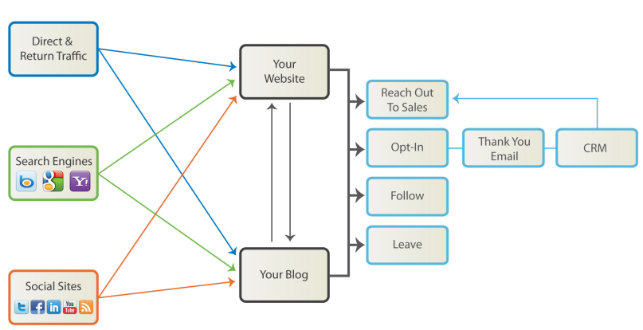
by Jennifer Hart Yim | May 6, 2014 | Blog, Content Marketing, Marketing, Social Media, Strategy
This is the first in a series of blog posts written by Adam Robinson, Director of Marketing at Cerasis. Founded in 1997, Cerasis is a top freight logistics company and truckload freight broker.
The purpose of this series of blog posts is to give others in our industry and especially those in the manufacturing industry, a guide to create an effective digital, social media, and content marketing strategy which will produce results for your company. If you have followed the Cerasis blog since its launch in March 2013, you have noticed that we work really hard at executing our strategy. The reason we work so hard is because we are passionate about educating the marketplace on information that matters to them. In that way, we want to be the de facto expert in the manufacturing and logistics industries. If we can help those who are our customers and potential customers (manufacturers and distributors) with best practices around logistics and freight, as well as manufacturing industry news, we are continuing our mission of driving long term value (even if we give the information away for free). The result (we hope and have seen) is that people view us as the expert and will want to engage us in a long term relationship as their logistics services provider. We hope this is helpful and you learn something from it!
Background of Cerasis use of Content Marketing and Social Media
- Company started formal marketing for the first time in October 2012, its 16th year.
- Little brand awareness, not thought of as a thought leader, but company still grew well by referral.
- It was important for us to establish our messaging, our target audience, and how we were going to best market the company.
- We didn’t have any budget for advertising, and with the rise of content marketing, we knew it was important to use social media and content as a way to start marketing and fine tuning the messaging of the company.
- We finished our market research phase (tips below on how to conduct one), and knew the content and who we wanted to reach.
- We then looked at all the social media channels and decided which platforms to use and what online communities to join.
- We built a strategy and started executing our content by simply posting one piece of content every business day.
Digital Marketing Strategy Approach for Cerasis
There is a process to strategic planning in order to lead towards sustainable marketing programs which yield a tangible return-on-investment (ROI). The process starts with understanding where social, digital, content, and traditional marketing fits in the world of inbound lead generation and increased brand awareness.

The goal of any strategic plan should be to find and acquire new customers and to grow existing customer relationships. The map on the next page shows how customer engagements happen online and in general. This map to the left helps us determine Cerasis’s route, analyze where we currently are, and hone in on where we should focus our attention to keep the strategy on track.
So, what are all the results from our social and digital marketing you ask?
Cerasis Quick Stats (Sept 12 to March 14)
- All Visits to Cerasis.com: 4,476 to 34,461 (669.91% Increase)
- Blog Visits: 0 to 28,271 (notice how without our content and social media, we would not have grown our website visits to where they are today)
- Social Media Visits: 4 to 8,546 (214,550% Increase)
- Search Visits: 711 to 16,275 (2,189.03% Increase)
- Social Community: 175 users total to 9,635 users total
- Twitter: 0 to 2,760 Followers
- FB: 0 to 492 Likes
- LinkedIn Group Members: 0 to 3,550
- LinkedIn Profile Connections: 120 to 1,456
- LinkedIn Company Page Followers: 51 to 529
- Google Plus Followers: 0 to 662 and over 310,000 views of the Company Page
- Pinterest Followers: 0 to 188
- Engagement Numbers:
- Twitter Mentions/RTs: 14,825/5,721
- LinkedIn Group Comments: 12,766
- Facebook Comments, Likes, Shares: 1,484
- LinkedIn Page Impressions/Interactions/Clicks: 247,359/566/1,560
- Pinterest Impressions/Repins: 73,698/327
- Blog Comments: 841
- Google Plus +1s: 2,976
- Conversion data (note, leads vary based on industry; 1 sale for us can mean a lot of revenue)
- Leads From Search Engines: 71
- Leads From Social Media: 65
- Leads From Webinars: 52
- Total Customers Gained: 35
Conclusion
Social media, content, and digital marketing are much like the Pareto Principle: Focus on the platforms and entities which yield the highest results, don’t just do something or be somewhere to do it! It all comes down to strategy! Now, if you have the resources to be on every social media platform, you should, but only if you do it well!








